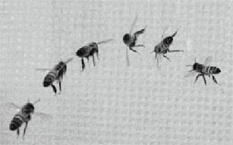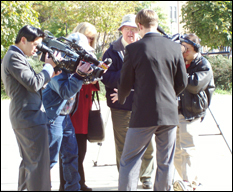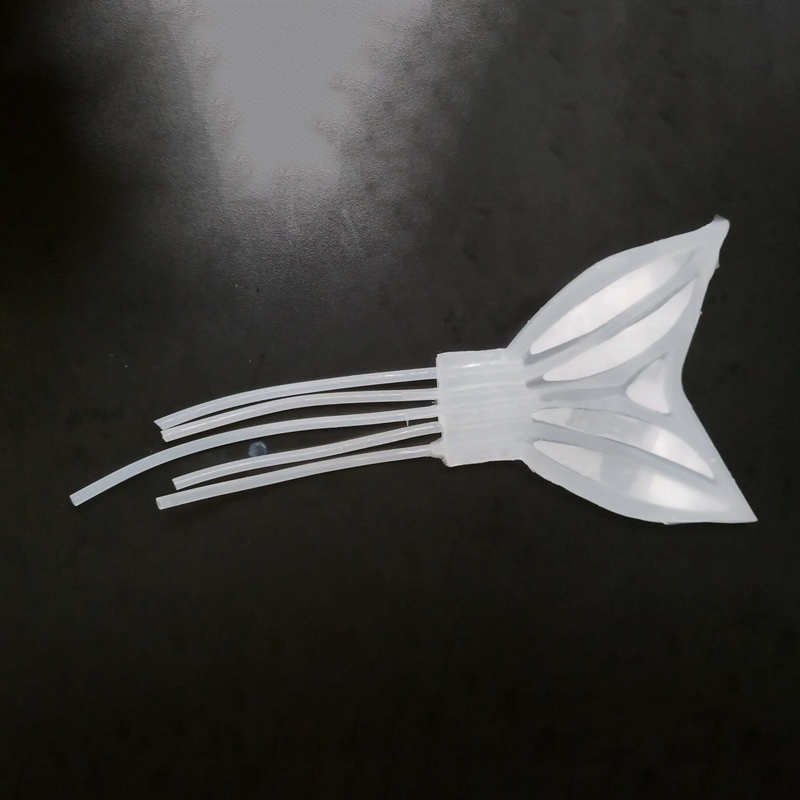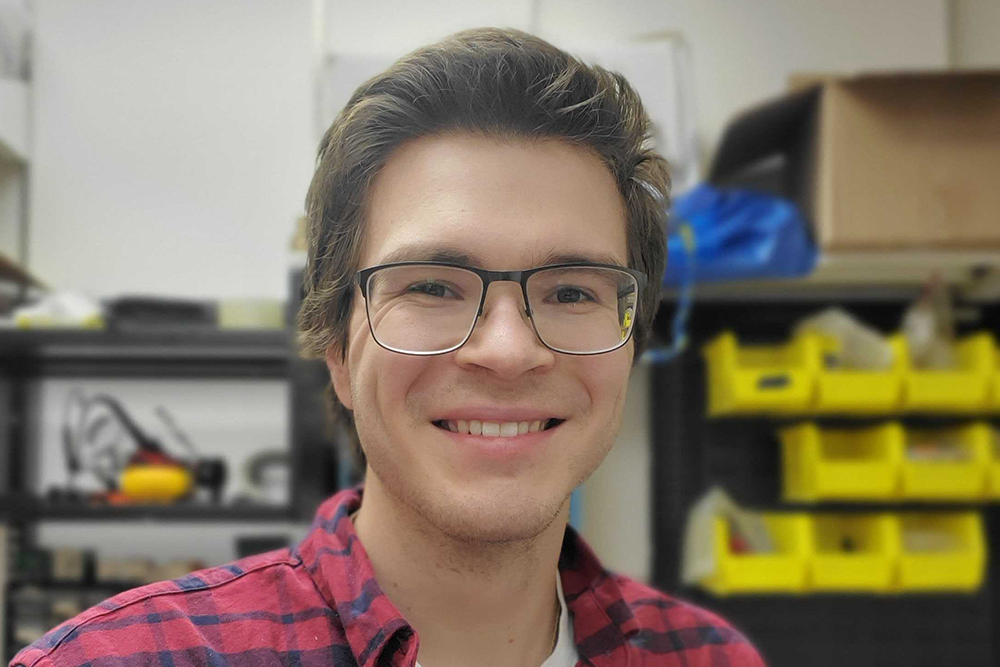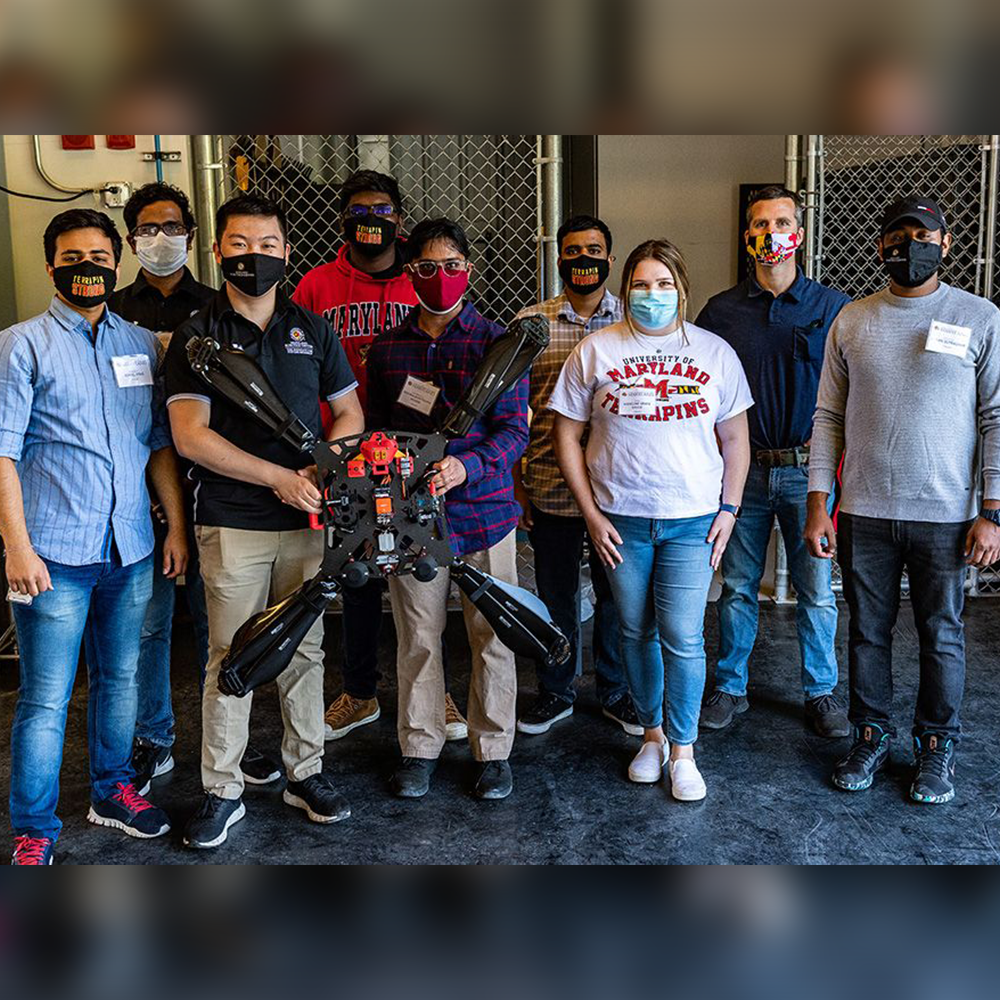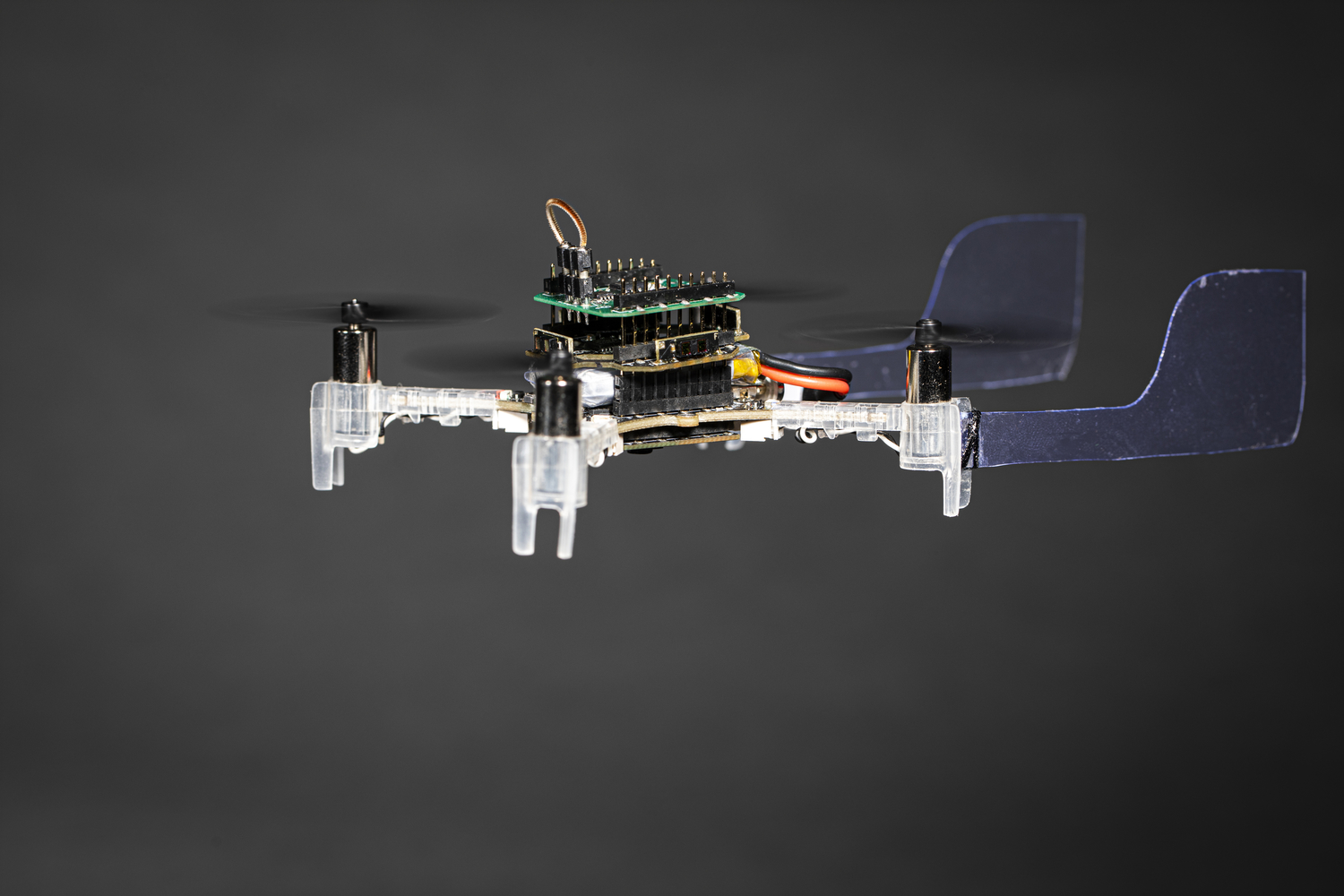News Story
Maple Seeds Inspire Robotic Flight

The smallest monocopter built by Ulrich to-date, with a maximum dimension of 9.5 cm and a wing equal in size to a natural samara. (Photo by Evan Ulrich/A. James Clark School of Engineering, U-Md.)
Maple tree seeds (or samara fruit) and the spiraling pattern in which they glide to the ground have delighted children for ages and perplexed engineers for decades. Now aerospace engineering graduate students at the University of Maryland’s Clark School of Engineering have learned how to apply the seeds’ unique design to devices that can hover and perform surveillance in defense and emergency situations.
In the 1950s, researchers first tried to create an unmanned aerial vehicle that could mimic a maple seed's spiraling fall. Ever since, their attempts have been foiled by instability, resulting in a lack of control over the tiny (less than one meter) vehicles, which were easily knocked off course by wind. As recently as June 2009, this was considered as an open challenge for engineers.
The Clark School students have solved the steering problem and provided a solution that allows the device to take off from the ground and hover, as well as perform controlled flight after its initial fall to the ground after being deployed from an aircraft. The device can also begin to hover during its initial descent, or after being launched by hand.
The students studied maple seeds and developed a new design incorporating the natural flight of the tiny flyers. The insight gleaned from this study enabled the creation of the world's smallest controllable single-winged rotorcraft. The maple seed-inspired design is valuable because when dropped, unpowered, from a plane and then controlled remotely, it can perform surveillance maneuvers for defense, fire monitoring and search-and-rescue purposes.
"Natural maple seeds usually trade off altitude for rotation as they fall to the ground," said Evan Ulrich, one of the graduate students on the team. This altitude-rotation trade-off results in the power that the seeds need to travel.
But this traditional design does not provide enough power to allow the device to hover.
Ulrich and other graduate students in the research group led by Clark School Dean Darryll Pines (Professor, Department of Aerospace Engineering) incorporated a new part to their device, a curved, comma-shaped component in the body of the device, which provides more stability and gives the device power to hover. They have two patents pending on their innovation.
Part of the solution to controlling flight was to physically separate the problem of propulsion and stability. The wing of the vehicle is designed to function in the same way as natural samara and performs a stable autorotation during descent. The propulsive section of the vehicle functions like the tail rotor on a helicopter, though instead of preventing rotation, (as in the case of a helicopter), it maintains rotation (to allow it to hover).
The Clark School researchers made use of research and testing techniques developed at the school's Alfred Gessow Rotorcraft Center to develop the maple seed-inspired device. The aerodynamic and geometric properties of natural samara were studied in detail. The insight gleaned from this study enabled the creation of the world's smallest controllable single-winged rotorcraft.
The vehicle has been demonstrated at University of Maryland events, the American Helicopter Society Annual Forum, the Smithsonian Udvar-Hazy Air and Space Museum, and at the 100th anniversary of the College Park airport.
Published October 19, 2009


